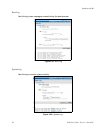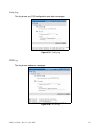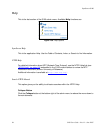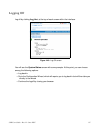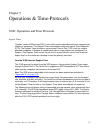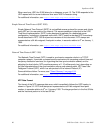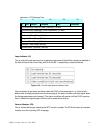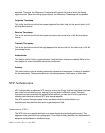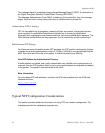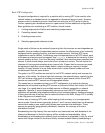
90 S100 User Guide – Rev. D – June 2005
SyncServer S100
When used over UDP, the S100 listens for a datagram on port 13. The S100 responds to the
UDP request with the current date and time as an ASCII character string.
For additional information, see:
http://www.faqs.org/rfcs/rfc867.html.
Simple Network Time Protocol (RFC 2030)
Simple Network Time Protocol (SNTP) is a simplified access protocol for servers and clients
using NTP as it is now used on the Internet. The access paradigm is identical to the UDP/
Time client implementation. SNTP is also designed to operate on a dedicated server
configuration, including an integrated radio clock. SNTP uses the standard NTP time stamp
format described in RFC 1305 and previous versions of that document. NTP stamps are
represented as a 64-bit unsigned, fixed-point number, in seconds relative to 0
h
on January 1,
1900.
For additional information, see:
http://www.faqs.org/rfcs/rfc2030.html.
Network Time Protocol (RFC 1305)
The Network Time Protocol (NTP) is used to synchronize computer clocks in a TCP/IP
computer network. It provides a comprehensive mechanism for accessing national time and
frequency distribution services, for organizing the time-synchronization subnet, and for
adjusting the local clocks. NTP provides accuracy of 1-10 milliseconds (ms), depending on
the jitter characteristics of the synchronization source and network paths. NTP uses User
Datagram Protocol (UDP), which is a sub-protocol of the Internet Protocol (IP).
Some definitions follow. For more, see “Time Glossary” on page 121
.
For additional information, see
http://www.faqs.org/rfcs/rfc1305.html.
NTP Data Format
The format of the NTP message data area, which immediately follows the UDP header, is
shown in Figure 3-2. NTP time stamps are represented as a 64 bit unsigned fixed-point
number, in seconds relative to 0
h
on 1 January 1900. The integer portion is in the first 32 bits
and the fractional portion is in the last 32 bits.



